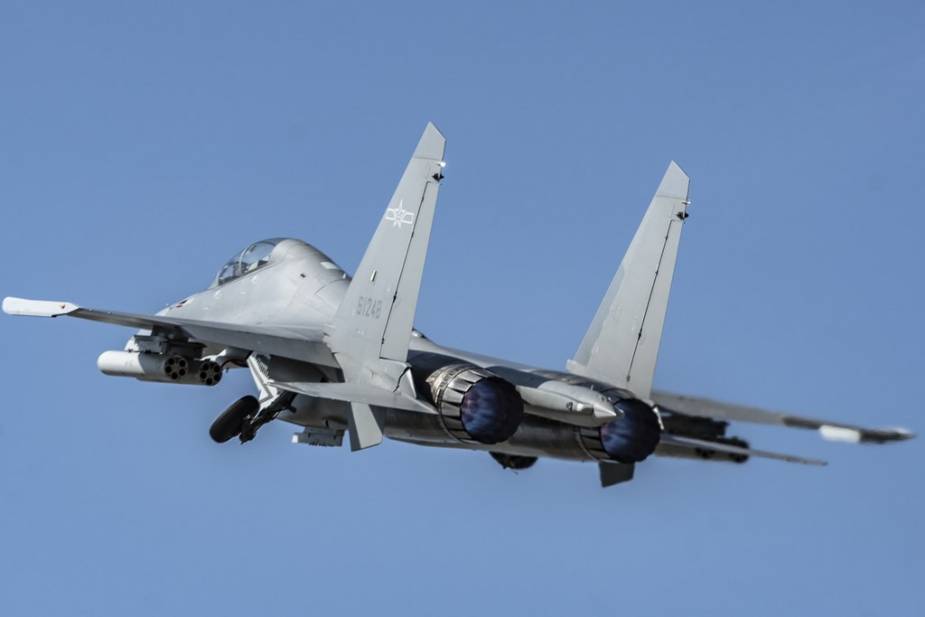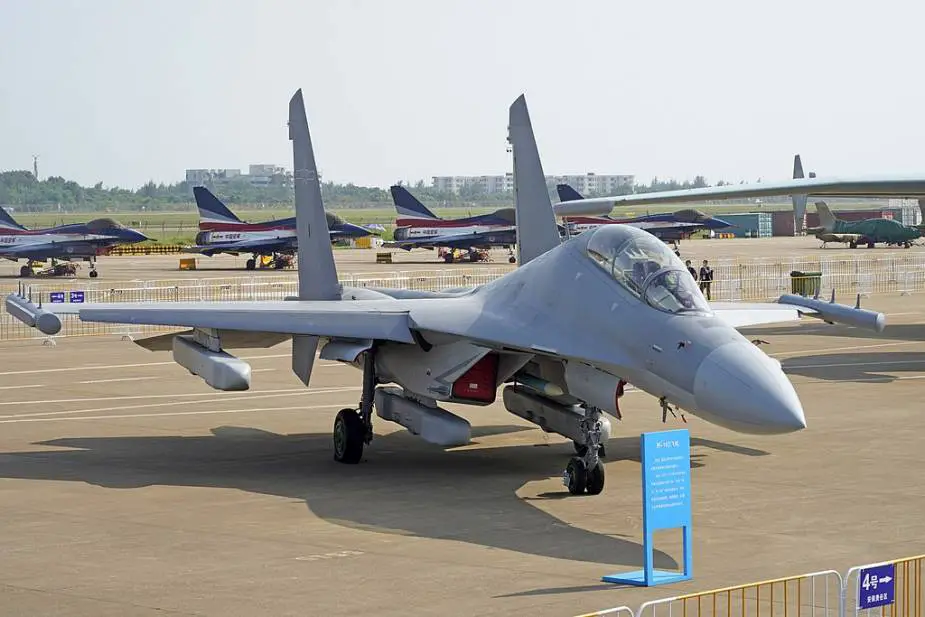Breaking news
Chinese PLA Eastern Theater Command replaces old J-7 and J-8 aircraft with more J-16 fighter jets.
The Chinese People's Liberation Army (PLA) Eastern Theater Command recently upgraded its aircraft fleet by replacing a group of older planes with additional Shenyang J-16 heavy fighter jets. These advanced warplanes are frequently seen during routine drills and patrols near Taiwan. Liu Xuanzun reports in Global Times.
Follow Air Recognition on Google News at this link
 Shenyang J-16 with WS-10 engines taking off (Picture source: Wikipedia/mil.ru)
Shenyang J-16 with WS-10 engines taking off (Picture source: Wikipedia/mil.ru)
According to a report from China Central Television (CCTV), an air group affiliated with the air force of the PLA Eastern Theater Command underwent a transition to flying J-16 fighter jets. Recently, the air group conducted its inaugural flight training session with the new aircraft. Several J-16s took off from a training airfield in Jiangsu Province, East China, flew towards a designated area, and performed a series of training maneuvers. This marks a significant milestone for the brigade as they begin operating the more advanced J-16 aircraft following ground simulator training.
Zhang Zhencheng, the deputy chief of staff of the brigade, highlighted the superior aerodynamic configuration and enhanced control performance of the new J-16 aircraft compared to its predecessors, stating that pilots must adapt their flying techniques to fully utilize its capabilities.
A military expert in Beijing, who preferred to remain anonymous, explained to Global Times that the cross-generational transition indicates the brigade likely upgraded from older aircraft models such as the legacy J-7 or J-8 fighter jets. This transformation significantly enhances the brigade's combat capabilities, marking a substantial advancement. Reports suggest that China is decommissioning legacy aircraft as part of its efforts to modernize its warplane fleet, with the J-7 and J-8 aircraft among those being phased out.
Regarded by analysts as China's second most formidable fighter jet after the stealth-capable J-20, the J-16 is a 4.5-generation multirole heavy fighter capable of air combat and land attack. Analysts also note that the J-16, with its impressive payload capacity, can effectively cooperate with the J-20 to enhance overall combat capabilities.
Prior to this recent upgrade, a considerable number of J-16s had already been deployed by the PLA Eastern Theater Command, and the Taiwanese defense authority frequently reported sightings of these aircraft during routine PLA exercises and patrols around the island.
 Shenyang J-16D with electronic warfare pods (Picture source: Wikipedia/Chinese MoD)
Shenyang J-16D with electronic warfare pods (Picture source: Wikipedia/Chinese MoD)
Shenyang J-16
In the 1990s, China purchased Sukhoi Su-27 air superiority fighters from Russia, including those licensed-produced in China as the Shenyang J-11A. The J-11A has further developed into the J-11B single-seat and BS twin-seat variants with indigenous technology. The J-16 is a strike fighter derived from the J-11BS model.
The J-16 is equipped with an AESA radar and is powered by two Chinese Shenyang WS-10A turbofan engines. Weight is reduced through the greater use of composite materials. J-16 units have received radar-absorbent paint to reduce their radar signature and enhance the suppression of enemy air defenses (SEAD) capability in conjunction with electronic support measures pods. The cockpit is fitted with a helmet-mounted display (HMD) system to improve the pilot’s situational awareness.
The electronic warfare version of the fighter, named J-16D, was developed in the 2010s. The aircraft reportedly made its first flight in 2015. J-16D is designed to suppress enemy air defenses (SEAD), capable of housing internal jamming equipment and carrying various external electronic warfare pods.
According to aviation researcher Justin Bronk of the Royal United Services Institute, J-16 holds advantages over Russian Flanker variants with its wide application of composite materials, longer-range missiles, advanced sensors, and avionics. J-16 represents a transition by the Chinese aviation industry away from a past dependence on Russian technology towards developing modern derivatives that are superior to the Russian originals in many aspects.
The Chinese military is developing advanced autonomous capabilities for its combat aircraft. In March 2021, it was reported that a J-16 variant with the backseat co-pilot replaced by an artificial intelligence algorithm called "intelligence victory" was undergoing testing at Shenyang Aircraft Corporation. A similar aircraft was also spotted by satellite image at an experimental test base near Malan, Xinjiang in June 2021.


























